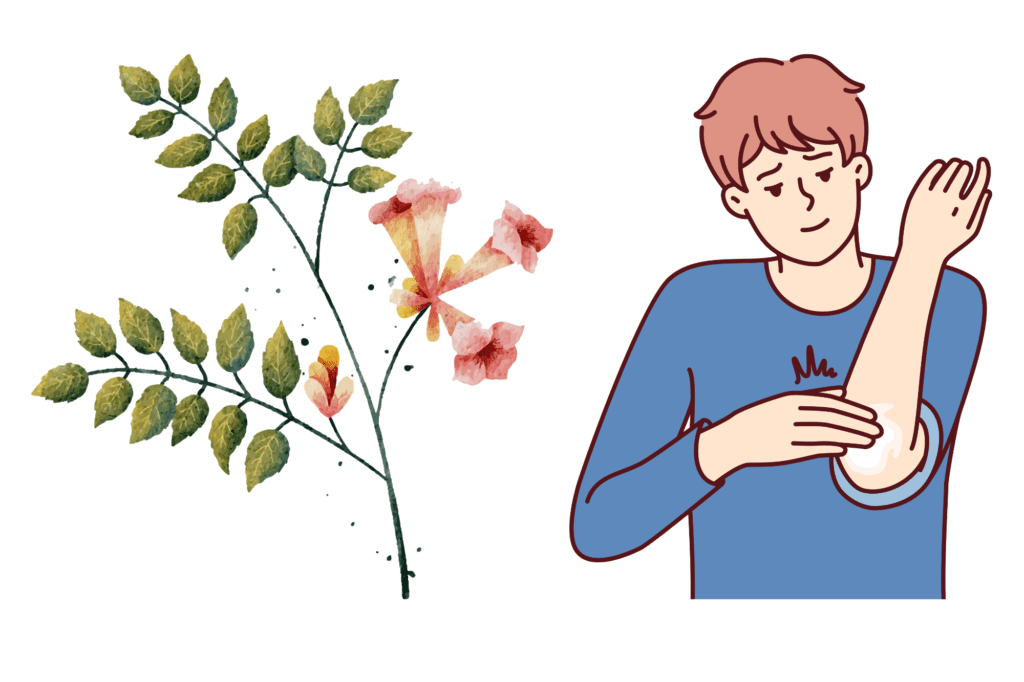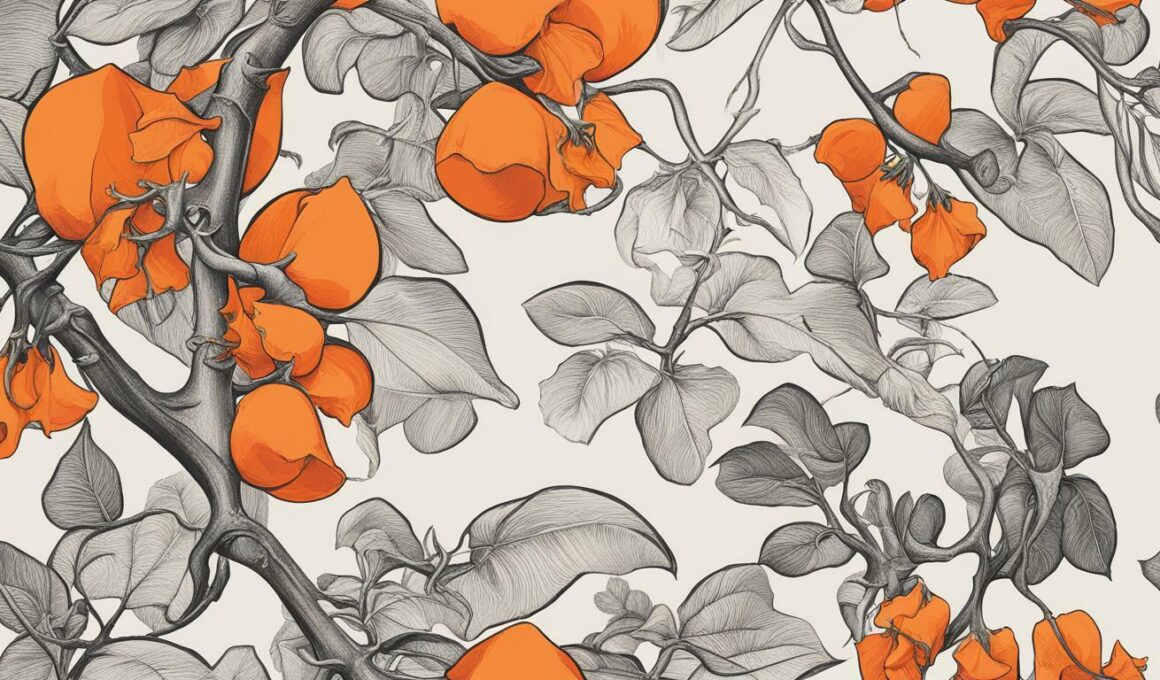Key Takeaways
- Trumpet vine can cause a skin rash if you come into contact with its sap.
- It’s important to be able to identify trumpet vine to avoid potential skin reactions.
- There are steps you can take to prevent and treat trumpet vine rash.
- If you’re looking for an alternative to trumpet vine, there are safer options available to consider.
Understanding Trumpet Vine Rash: Symptoms and Causes
If you’ve come into contact with trumpet vine, you may have experienced skin irritation or an allergic reaction. It’s important to understand the specific symptoms and causes of this type of rash to properly manage and treat it.
What is Trumpet Vine Rash?
Trumpet vine rash, also known as trumpet vine dermatitis or trumpet vine allergy, is a skin reaction caused by contact with the plant’s sap. This sap contains chemicals that can cause skin irritation and allergic reactions in some individuals.What are the Symptoms of Trumpet Vine Rash?
Symptoms of trumpet vine rash can vary from person to person, but may include:- Redness
- Itching
- Blisters
- Swelling
- Burning
What Causes Trumpet Vine Rash?
Trumpet vine rash is caused by the plant’s sap, which contains chemicals such as urushiol and luteolin. These chemicals can cause an allergic reaction in some individuals who come into contact with them. It’s important to note that even if you haven’t had an allergic reaction to trumpet vine in the past, you can still develop one in the future. In addition to direct contact with the plant, individuals may also experience a reaction from indirect contact, such as petting an animal that has come into contact with the sap or touching clothing or equipment that has been in contact with the plant.Tip: If you suspect you have come into contact with trumpet vine, thoroughly wash the affected area with soap and water as soon as possible to help minimize the effects of the plant’s sap.
Identifying Trumpet Vine: What to Look For
If you want to avoid a trumpet vine rash, it’s important to be able to recognize the plant. Here are some key characteristics to look for:| Feature | Description |
|---|---|
| Leaves | Compound and green, with 7–11 leaflets that are toothed and pointed. |
| Flowers | Trumpet-shaped, orange to reddish-orange, and grow in clusters. |
| Vines | Woody and can grow up to 40 feet long. |
Preventing Trumpet Vine Rash: Tips for Safety
If you’re planning to handle trumpet vine, it’s important to take the necessary precautions to avoid potential skin reactions. Here are some tips you can follow:- Wear protective clothing: Cover your skin with long sleeves and pants when working with trumpet vine. Additionally, wearing gloves and eyewear can prevent sap from coming into contact with your skin and eyes.
- Wash your skin: After handling trumpet vine, it’s important to wash your skin thoroughly with soap and water. This can reduce the risk of irritation or allergic reactions.
- Avoid direct contact: If possible, avoid direct contact with the plant. For example, if you’re trimming the vine, try using pruning shears rather than breaking off branches by hand.
- Be cautious when burning: If you’re burning trumpet vine, be careful not to inhale the smoke, as this can cause respiratory irritation. It’s best to burn the plant in a well-ventilated area.
- Store safely: To prevent accidental exposure, store trumpet vine cuttings and debris in a sealed container.
Treating Trumpet Vine Rash: Soothing Measures
If you come in contact with trumpet vine and experience a rash, it can be uncomfortable and frustrating. But don’t worry, there are soothing measures you can take to alleviate the symptoms. Here are some tips:
Here are some tips:
- Wash the affected area with soap and water as soon as possible to remove any sap residue.
- Apply a cold compress or take a cool bath to relieve itching and inflammation.
- Use over-the-counter creams or ointments, such as hydrocortisone, to reduce redness and itching.
- Take an antihistamine, such as Benadryl, to alleviate itching and reduce swelling.
Remember: Prevention is key. Take precautions when dealing with trumpet vine to avoid getting a rash in the first place.
What Are the Best Remedies for Treating Trumpet Vine Rash?
If you’re searching for ways to treat trumpet vine rash effectively, there are a few remedies worth trying. Applying a cold compress can help soothe the irritation and reduce inflammation. Using over-the-counter corticosteroid creams can also alleviate discomfort and itching. However, it is essential to consult a healthcare professional for proper diagnosis and treatment options tailored to your condition.
Trumpet Vine Alternatives: Safer Garden Choices
If you’re looking for alternative plants to grow in your garden, there are plenty of options that can give you the same aesthetic appeal without the risk of skin reactions. Some trumpet vine alternatives include:| Plant Name | Features | Benefits |
|---|---|---|
| Clematis | Large, showy flowers | Easy to grow, comes in a variety of colors and sizes |
| Trumpet Honeysuckle | Trumpet-shaped flowers | Attracts hummingbirds and butterflies, drought-tolerant |
| Wisteria | Long, cascading flowers | Fragrant blooms, visually stunning |
| Jasmine | Clusters of white or yellow flowers | Fragrant blooms, low maintenance |









